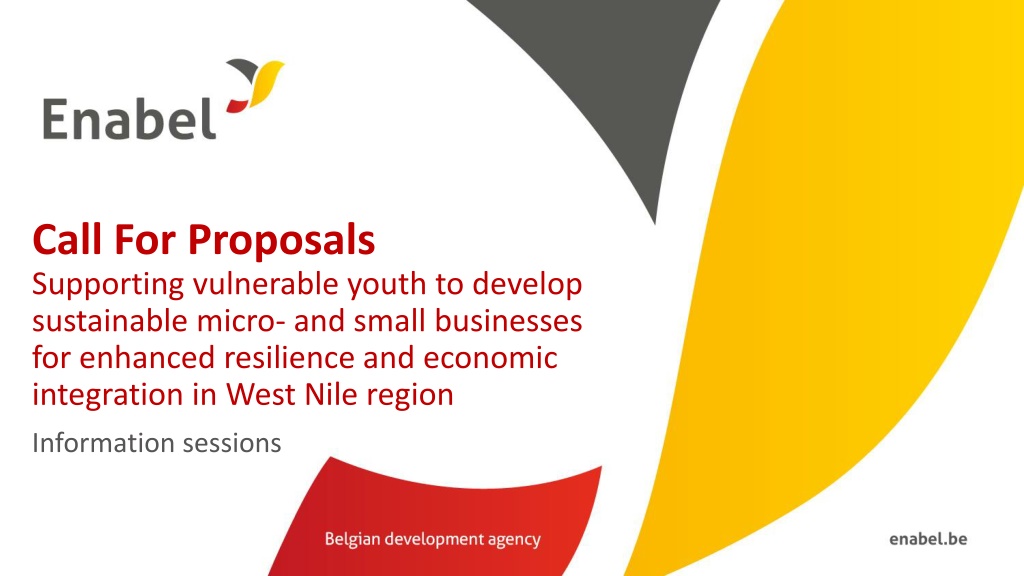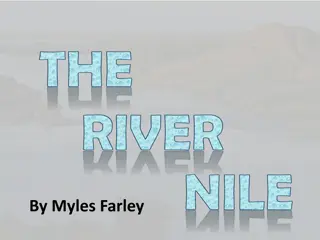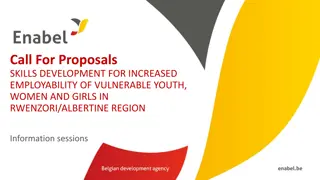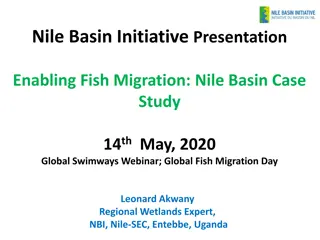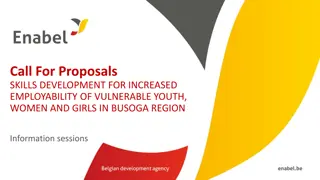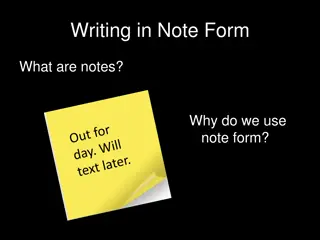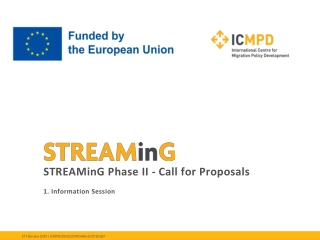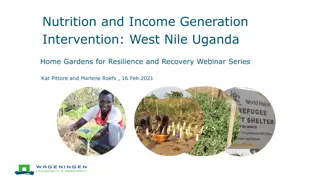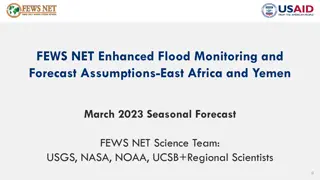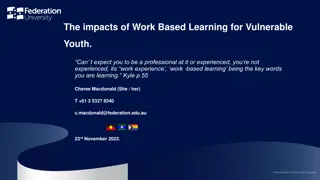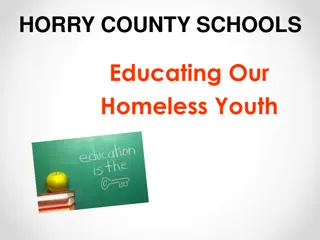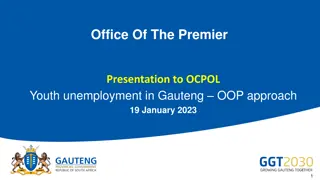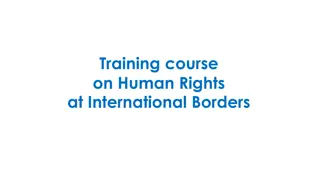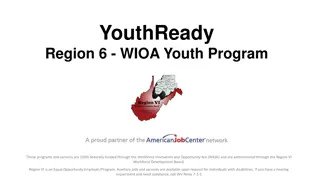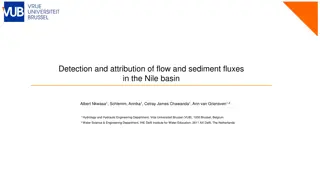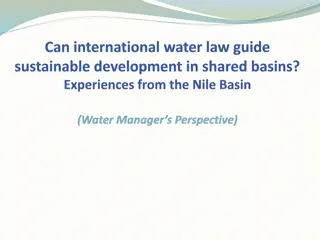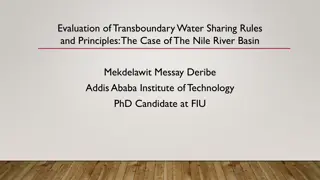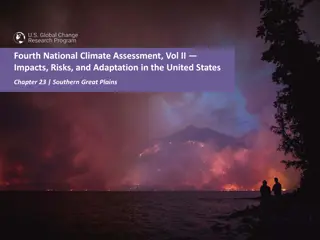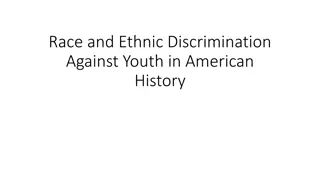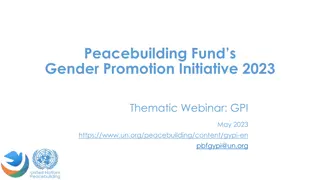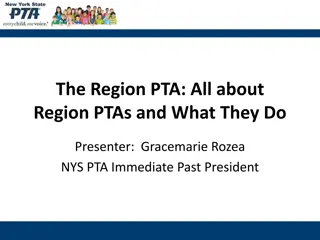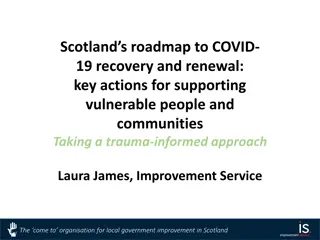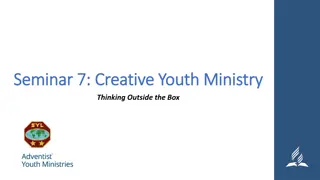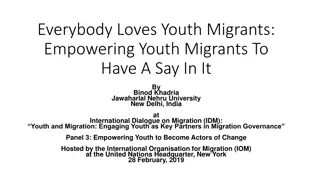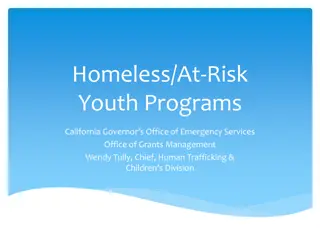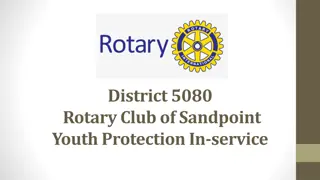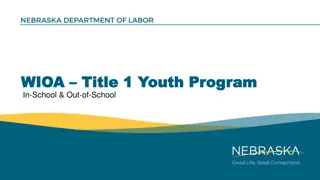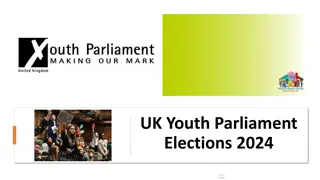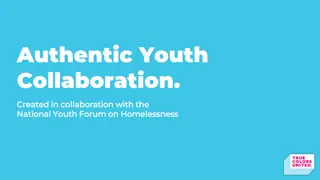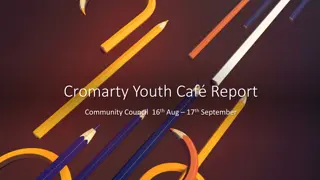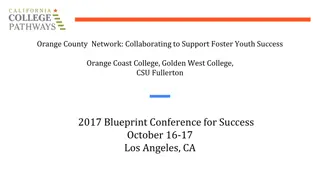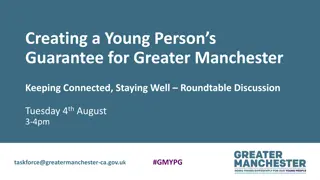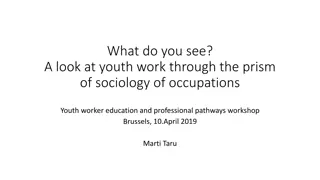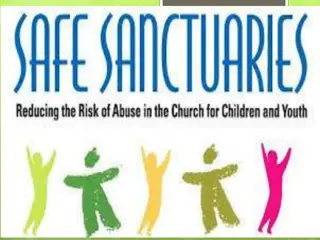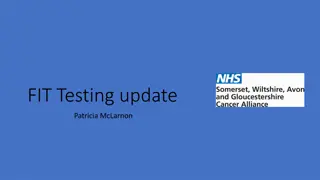Call for Proposals: Supporting Vulnerable Youth in West Nile Region
Encouraging vulnerable youth in West Nile Region to develop sustainable micro- and small businesses for resilience and economic integration. Information sessions include WeWork introduction, objectives, admissibility criteria, application process, and guidelines. Enabel's Country Portfolio Objectives aim for youth and women's economic independence. Scope covers entrepreneurship promotion for sustainable livelihoods and food security among vulnerable youth, especially young women.
Uploaded on Sep 10, 2024 | 0 Views
Download Presentation

Please find below an Image/Link to download the presentation.
The content on the website is provided AS IS for your information and personal use only. It may not be sold, licensed, or shared on other websites without obtaining consent from the author. Download presentation by click this link. If you encounter any issues during the download, it is possible that the publisher has removed the file from their server.
E N D
Presentation Transcript
Call For Proposals Supporting vulnerable youth to develop sustainable micro- and small businesses for enhanced resilience and economic integration in West Nile region Information sessions
Presentation outline 1. Introduction to WeWork and the Call for Proposals 2. Objectives of the call 3. Admissibility criteria a. Actors b. Actions c. Costs 4. Concept note application form 5. Application and selection procedure
Call for Proposals Guidelines, annexes, clarifications (Q&A) and all other communication: https://www.enabel.be/grants/ Call reference number: UGA22003-10004 Call Title: Supporting vulnerable youth to develop sustainable micro- and small businesses for enhanced resilience and economic integration in West Nile sub-region & Kiryandongo Procedure: 2 phased : (1) Concept note stage, (2) proposal stage
Enabel Country Portfolio Objectives Overall Objective General objectives Young people and women in Uganda develop into active, economically independent citizens in a sustainable society that respects human rights and ensures quality basic services WeWork Green and Decen Jobs for Youth Pillar 1 Young people, especially young women, acquire skills and find decent jobs or entrepreneurship opportunities in agriculture and the green and sustainable economy Pillar 2 The right to safe and quality education and health care is more transparently ensured, in particular for vulnerable groups including children, girls and women, and refugees
1. Result 4 Entrepreneurship promotion Address barriers to local economic integration for vulnerable youth, particularly young women Pathway to self-employment Increase resilience = sustainable livelihoods & food security Sustainable micro- and small businesses (incl informal)
1. Result 4 Entrepreneurship promotion Target groups 1) Un(der)employed, skilled youth start a sustainable business 2) Youth/youth group business owners Operate a sustainable business Vulnerable youth BUT w/min required skills & capacity NOT non-skilled youth in need of initial TVET
2. Call Objectives General objective The livelihoods of vulnerable youth, including young women, in West Nile subregion, are improved and sustained through access to self- employment opportunities Specific objective Vulnerable youth, including young women, start and grow sustainable micro- or small businesses, through enhanced access to quality business development support
2. Call objectives Results (overall) 1000 vulnerable refugee and host community youth, including young women (ie. Skilled, unemployed youth as well as youth business-owners), are supported to start or grow sustainable micro- and small businesses through quality business development support; 1000 vulnerable refugee and host community youth (the same target group as under expected result 1), are supported to access affordable finance and capital to start or grow their micro- or small businesses; Good practices in (green/climate-smart) business development services for the economic integration of vulnerable youth are scaled-up.
2. Call objectives Sustainable livelihoods Criteria for established sustainable livelihoods : Minimum of 3 consecutive months with stable income; Stable income will be defined at a level of a minimum net income of UGX 214,000 per month; Enhanced incomes of targeted beneficiaries by at least 20% of monthly income. The income increase should raise the income of the targeted beneficiary to at least UGX 214,000 net and above.
2. Call volume and grant amounts Total call volume is 1,000,000 EUR Lot 1: Agriculture: indicative allocation: 650,000 EUR Lot 2: Green economy: indicative allocation: 350,000 EUR For lot 1 grant applications must fall between minimum 150,000 and maximum 500,000 EUR For lot 2 grant applications must fall between minimum 150,000 and maximum 350,000 EUR
3. Admissibility criteria 3 levels A) The actors: Admissible applicants B) The actions: Admissible actions for grants C) The costs: Admissible types of costs that may be included in grants
3a. The actors: (lead) applicant Be a legal entity; Be a private not for profit entity or foundation; Be established or represented in Uganda (= registered!); Be a National or International Non-Governmental Organization, Civil Society or Community-Based Organization, or Foundation; Business Membership Organisation; or Non-profit Business Development Service Provider; Have demonstrated local expertise and experience in managing quality business development initiatives and economic empowerment of vulnerable youth and young women in a Uganda for at least the past 2 years; Be directly responsible for the preparation and management of the action with the co-applicant (where applicable) and not be acting as an intermediary; Have an active Bank Account for the past 12 months; Have in-house financial management capacity.
3a. The actors: (lead) applicant Exclusion grounds: Annex VII grant agreement Applicant s declaration in application form completed and signed (Annex A guidelines) Supporting documents (upon preselection 2ndstage): Criminal record clearances from Interpol NSSF clearance certificate Tax clearance certificate
3a. The actors: Co-applicants The applicant may form a partnership and act with one and maximum two co-applicants (not obligatory!) The partnership between lead and co-applicants is to optimize cumulation of complementary expertise. The selected applicant becomes the contracting-beneficiary and is the main point of contact for the contracting authority. It shall represent its co-applicant and act in their name. It shall design and coordinate implementation of the action. The co-applicant shall participate in the implementation of the action and the costs that they incur shall be eligible in the same way as those incurred by the lead applicant. Any co-applicants must sign a mandate in 2nd/proposal stage (part B application form)
3a. The actors: co-applicants Be a legal entity; Be a public entity; or a private not for profit entity or foundation; or a legal entity of private law for which profit maximization is not the priority objective; Be established or represented in Uganda (= registered!); Be any of the following types of organization: Accredited public or private non-profit technical and/or vocational skills training provider; Semi-autonomous public agency in Research and Development, agricultural extension services or community development; National or International NGO, Civil Society or Community-Based Organization, or Foundation; Business Membership Organisation; Non-profit Business Development Service provider; A cooperative or social enterprise for which profit maximization is not the priority objective; Have demonstrated expertise and experience in participating in the implementation of quality business development initiatives and economic empowerment of vulnerable youth and young women in the geographical target area for at least the past 2 years; Have an operational governance structure and an active bank account for the past 12 months.
3a. The actors: co-applicants Private law for which profit maximization is not the priority objective, conditions: (1) Social objectives (ie. aimed at improving human, societal and environmental wellbeing) serve the primary purpose of the entity (2) Generating revenue/profits is not an objective in itself, but a means to achieve social goals; hence the majority of revenue/profits are reinvested back into the company/entity for social purpose OR into actions for social purpose ! This has to be demonstrated through the articles of association, any other legally binding documentation (board/shareholder resolutions) and/or financial statements for the past 3 years. ! This considers the entity s constitution, any ad hoc resolution merely related to what would happen with potential funding from Enabel is not sufficient ! Double check if this can be sufficiently demonstrated to avoid ineligibility of the application
3a. The actors Summary types Organisation type National or International NGO, Civil Society or Community-Based Organization, or Foundation Non-profit Business Development Services (BDS) provider Lead applicant Co-applicant Yes Yes Yes Yes Business Membership Organizations or associations Yes Yes Accredited public or private non-profit technical and/or vocational skills training provider No Yes Semi-autonomous public agency in Research and Development, agricultural extension services or community development No Yes Cooperatives or social enterprises for which profit maximization is not the priority objective No Yes
3a. The actors Physical presence Selected applicants are required to be based in the targeted subregions (= eligible districts!) during implementation of the action and hence applicants are to demonstrate in their application how they will ensure their physical presence either through: an existing office of the applicant; An existing office any co-applicant; an office space to be set-up clear plan to be elaborated in application form!
3a. The actors: Associates Participate actively in the action, but are not eligible for grants and only qualify to receive daily allowances and travelling expenses. To be specified in part B of the application form. They need not to sign the mandate in 2nd/proposal stage.
3a. The actors: Contractors These are contractors for services, works and equipment. These must be sourced through a procurement process using relevant procedures i.e. PPDA (public procurement law) for public entities and annex VIII of the Grant Agreement for private entities
3b. The actions An action comprises a series of activities that are necessary to achieve the results and contribute to the specific(s) objective(s) pursued by the application 1. Duration 2. Geographical coverage 3. Priority value chains and themes 4. Target groups 5. Type of action and eligible activities
3b. The actions: Duration Action = grant agreement : minimum 15 to maximum 24 months (excluding 3 months grant closure) Business support schemes: minimum 6 to maximum 12 months (trainings & technical assistance) Within the duration of action, targeted beneficiaries can be supported in different cohorts
3b. The actions: Geographical coverage The actions must be implemented in Uganda, West Nile sub-Region region in at least one of the following districts: Arua Adjumani Madi-Okollo Kiryandongo Terego Yumbe The actions may not be implemented in other districts Target groups/youth must reside in the target districts Majority of activities take place in target districts Applicants are encouraged to distribute their resources and targets over more than one district
3b. The actions: Priority value chains Lot 1: Agriculture: Horticulture value chains; Staple food crops: cassava, sim sim and sunflower value chains; Apiary value chain; Small livestock: poultry, piggery value chains; Coffee and cocoa value chains. Lot 2: Green economy: Sustainable tourism and hospitality value chains7; Renewable energy value chain; Sustainable forestry value chains (sustainable timber and non-timber, including agro-forestry models). Transversal: integration of organic and solid waste management can be considered for all targeted value chains
3b. The actions: Priority value chains lot 2 Green economy Sustainable tourism and hospitality value chains: ! takes full account of its current and future economic, social and environmental impacts, addressing the 3Ps (People, Planet, Profit) = sustainable microbusiness development in leisure and business tourism, while contributing to the conservation of the natural environment and cultural heritage, and inclusion of the local community Sustainable forestry value chains (sustainable timber and non-timber, including agro-forestry models): non-timber forest product (NTFP) includes all biological materials other than timber which are extracted from forests for human use. These include foods, medicines, spices, essential oils, resins, gums, latexes, tannins, dyes, ornamental plants, wildlife (products and live animals), fuelwood and raw materials, notably rattan, bamboo, small wood and fibres
3b. The actions: Priority value chains The call encourages actions supporting the sustainable development of targeted micro- or small business models in more than one value chain especially if establishing linkage between different value chains and/or more than one segment of a value chain (i.e. beyond production) Other value chains may be considered if applicants can demonstrate a tangible link with the development of prioritized value chains and clearly substantiate the relevance of the promoted business models in these other value chains for sustainable livelihoods. ! For agricultural value chains actions must promote agroecological, sustainable and integrated farming approaches that combine diversified agricultural practices, enhance food security, and diversify income
3b. The actions: Priority value chains : Actions w/links between lot 1 & lot 2 Applicants proposing actions for both lots are expected to submit a separate application for each lot If applicants propose one integrated action focusing on value chains under both lot 1 and lot 2, and establishing a tangible link between lot 1 and lot 2 value chains they can however submit one application under one lot If applicants propose actions focusing on value chains under both lot 1 and lot 2, without a tangible link between lot 1 and lot 2 value chains they must submit a separate application under each lot (ie. Two separate applications)
3b. The actions: Targeted business models Youth-owned micro- and small businesses, including in the informal economy (considering all segments of the prioritized value chains - from production to consumption), conducive to the following conditions: (1) Inclusiveness/accessibility for the target group (2) Environmental sustainability/contribution to the green transition (3) Economical viability of the business models Subject to evaluation!
3b. The actions: Target beneficiaries Vulnerable youth residing in the eligible districts (different vulnerability categories, to be demonstrated in application) At least 80% youth between the ages of 15 and 35 years At least 50% young women A ratio of 50% refugee and 50% host community populations
3b. The actions: Two types of target groups 1) (Semi-)skilled unemployed or underemployed individual youth or youth groups (i.e. youth that have participated in formal or non-formal technical or vocational training) who need further support to successfully start and operate a sustainable micro- or small, with optimal market access and integration in value chain and business networks; Individual youth, youth groups or youth farmer organisations who have established a micro- or small business, whose businesses are not sustainable or at risk of failure, and who need support to overcome start- up challenges, become resilient and maximize their business potential/market access/value chain integration. 2) ! Low or non-skilled youth who are in need of initial formal or non-formal technical and vocational training are not considered as a target group under this call.
3b. The actions admissible Sustainable micro- and small business development initiatives, integrating: Business development support (training, technical assistance, coaching) Innovative approaches, (best-available) technologies and good practices; Engagement of other private sector actors to mobilize expertise and/or to support development of business relationship; Strategies to enhance beneficiaries access to affordable finance and capital; Where relevant, strategies towards enhanced access to assets, including land & inputs (without distorting the local ecosystem and market); Strategies to support adherence to quality standards of products and services; Support to formalization and/or occupational licensing where relevant (ie. When strongly linked to market access); Support to product diversification through value addition; Outreach and awareness activities; Other social inclusion strategies that help remove gender and other vulnerability-related barriers
3b. The actions NON admissible Skills development initiatives targeting low or non-skilled youth and consisting primarily of initial technical and vocational training/non-formal skills development programmes; Actions consisting exclusively or primarily of sponsoring the participation of individuals in workshops, seminars, conferences and conventions; Actions consisting exclusively or primarily of financing individual scholarships for studies or trainings; Seminars and conferences designed to stimulate discussions and/or keep participants abreast of the latest trends in the thematic area; Workshops and conferences for political, spiritual and social enhancement.
3b. The actions: Admissible activities See guidelines, non-exhaustive Provision of start-up kits or inputs, tailored to specific business needs or business plans developed by targeted youth maximum 15% of the budget to provide a strategy on how the kits will effectively promote sustainable business development and not distort the local ecosystem and market Sub-granting to sub-recipients of sub-grants is allowed for 2 categories
3b. The actions: Sub-grants to sub- beneficiaries Optional not mandatory In 2nd/proposal stage need to elaborate: 1. The description of the objectives and results to be achieved with these sub- grants, the fundamental principles, the key concepts, the mechanisms, the actors and their role in the management process; 2. The criteria and modalities for the allocation of grants, accessibility conditions sub-beneficiaries, conditions for the admissibility of sub-projects, eligibility conditions for activities, costs and expenses; 3. The procedures for examining and awarding applications; 4. The maximum amount that can be allocated by sub-beneficiary; 5. The terms of contractualization with the sub-beneficiary; 6. The procedures and modalities for disbursing resources; 7. The procedures and modalities for technical and financial monitoring; 8. The procedures and modalities of control. Two categories allowed: I. Micro-business sub-grants to youth-business owners for investment/capital II. Sub-grants to processors/off-takers for value chain integration of smallholder suppliers
3b. The actions: Sub-grants to sub- beneficiaries I. Micro-business sub-grants conditions: The maximum amount for the sub-grants under this category is EUR 250 per supported youth/youth owned business; Maximum 20% of supported youth/youth-owned businesses under the action can be eligible for a micro business grant; To be eligible for a micro business grant, supported youth must have successfully completed the business support scheme organized under the action and present a sound and viable business plan/model; Approval of micro business grants for supported youth/youth-owned businesses will be done by a selection committee which is to include representatives of Enabel, and by applying different evaluation criteria including (but not limited to) the viability of the business plan/model, vision/sound projections, financial need and relevance, technical and economic feasibility, experience and motivation of the applicant, etc.
3b. The actions: Sub-grants to sub- beneficiaries I. Micro-business sub-grants conditions: Types of activities eligible for micro business grants include purchase of equipment, raw materials and inventory, marketing and advertising activities, or start-up related costs for newly developed businesses; The following costs are ineligible for sub-granting: non-business-related costs (e.g. personal expenses or assets) and repayment of existing debts or loans. Payment modalities cannot include any transfer in cash.
3b. The actions: Sub-grants to sub- beneficiaries II. Sub-grants to processors/off-takers conditions: The maximum amount for the sub-grants under this category is EUR 40,000 per processor/off-taker; Maximum 15% of the total budget can be allocated for sub- grants under this category; Activities for sub-grants under this category must include training/extension services to the targeted youth for enhanced productivity and quality management. Other eligible types of activities for sub-granting include provision of quality inputs, logistical support or set-up of collection points or services;
3b. The actions: Sub-grants to sub- beneficiaries II. Sub-grants to processors/off-takers conditions: To be eligible to apply sub-grants under this category, applicants must: Have demonstrated experience in this type of partnerships in the target region with processors/off-takers; Already identify and motivate the selection of the processor/off-taker(s) they would engage in the implementation of the action through sub-grants in their application and annex a signed Memorandum of Understanding with the identified entity(ies), demonstrating the commitment of both parties to the proposed partnership(s); To be eligible for sub-grants, processors/off-takers must: Establish decent and sustainable sales agreements with the youth producers/suppliers they are to support (i.e. long-term contracts with decent market prices) to ensure stable and inclusive market access/supply chain integration; Have existing training/extension services to producers/suppliers promoting their inclusive integration into the entity's supply chain; Source raw materials locally Commitment to co-finance the actions financially or through in-kind support. Payment modalities should include disbursements in instalments via bank transfer.
3b. The actions: Sub-grants to sub- beneficiaries II. Sub-grants to processors/off- takers Why subgranting? Does not fall under criteria for co-applicants not admissible for grants Cannot be involved as associates as costs for activities go beyond per diem & travel expenses Cannot be involved as contractors as it constitutes a partnership with common objectives, not a service
3b. Summary all type of actors that can be involved in implementation Co-applicants Entities meeting criteria for co-applicants Admissible for grants Associates Entities not meeting criteria for co-applicants and hence not admissible for grants Per diem and travel expenses only Contractors Entities not meeting criteria for co-applicants and hence not admissible for grants Services/works/supplies Applying procurement principles Processors/off- takers as sub- grantees Entities not meeting criteria for co-applicants and hence not admissible for grants Max 40,000 EUR per entity Total subgranting to such entities = max 15% of the total budget
3b. Number of applications The applicant cannot submit more than one (1) application per lot under this Call for Proposals. The applicant cannot be awarded more than one (1) Grant Agreement per lot under this Call for Proposals. The applicant cannot be at the same time a co-applicant in another application A co-applicant cannot be awarded more than one (1) Grant Agreement per lot under this Call for Proposals
3c. Admissible costs Direct costs i) Operational Costs Activity costs necessary for achieving the results of the action. This comprises the costs of the core activities to be implemented. ii) Management Costs: Administration costs directly attributed to the implementation of the actions. This comprise the costs of management, monitoring, equipment, facilities and other costs directly related to the core activity.
3c. Admissible costs Indirect Costs: Structure Costs (max 7% of operational costs)-to be verified. Administration costs not directly attributed to the project, but are necessary for the implementation of the actions Examples: Office rental Utilities: electricity, water, etc. for project office Salary of the Executive Director or + other support staff Office telecommunication cost Etc.
3c. Admissible costs Reserve for contingencies The budget may include a contingency reserve up to a maximum of 5% of the estimated eligible direct costs. It may only be used with the prior written authorisation of Enabel.
3c. Ineligible costs Subcontracting by means of service or consultancy contracts to personnel members, Board members or General Assembly members of the organisation subsidized Any sub-letting to oneself Purchases of land or buildings; Compensation for damage falling under the civil liability of the organisation Employment termination compensation for the term of notice not performed Purchase of alcoholic beverages, tobacco and derived products thereof Accounting entries not leading to payments Provisions for liabilities and charges, losses, debts or possible future debts Debts and debit interests Doubtful debts Currency exchange losses Loans to third parties Guarantees and securities; Costs already financed by another grant Invoices made out by other organisations for goods and services already subsidized
3c. Budget estimation Budget (in EUR) S/NO Category of expenses Activity 1 Operational costs 2 Management costs Structure costs (maximum 7% of operational costs) Total 3
